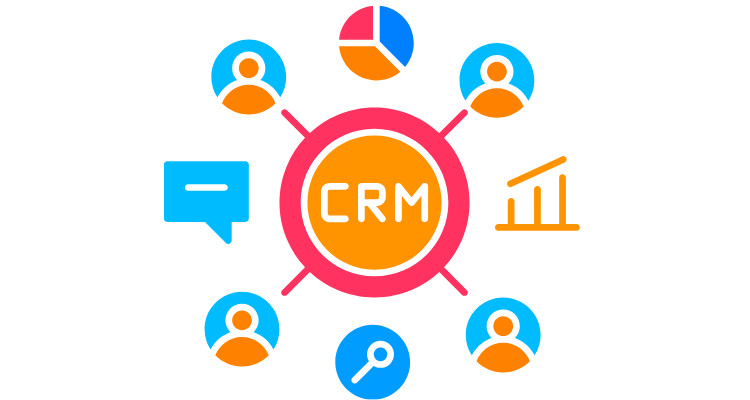Whether you’re a small business owner for whom marketing is only one among many responsibilities or a full-time digital marketing pro, you’re undoubtedly aware of the impact using the right tools has on audience engagement and overall growth. Even so, you’re likely not using these tools to the fullest.
Luckily, you don’t need to go to seminars or make time for exhausting online courses. Here’s an overview of the core tools you can squeeze much more value out of and a few simple tips to help get you there for each.
Table of Contents
ToggleCustomer Relationship Management (CRM)

Every digital marketer worthy of the name realizes how essential it is to track and nurture customer relationships. CRMs offer powerful options to that end by default, but digging deeper can greatly increase the number of MQLs you send the sales team’s way.
Take the sales funnel. Your CRM might be set up to categorize leads based on default steps. This works if the relationship is developing smoothly, but what if you’re dealing with specific hang-ups like prospects that will ask for a demo but don’t follow up with the details? Setting your CRM up to track such drop-off points lets you develop strategies that eliminate friction and make leads more receptive.
Segmenting customers based on behavior rather than just demographics or interests is another underutilized tool. Grouping based on indicators like the number of times someone visited a website or whether they submitted a form can be more time-consuming and relies on precise data. However, it also lets you set up specific automations and send timely messages that are more likely to resonate with an already active audience.
Social Media Management Tools

Having a single place from which you can engage with audiences across your socials and automate content calendar deployment is already a godsend. But are you also using your SMM’s social listening tools? They’re a must for jumping on a new viral trend’s bandwagon early enough to reap the benefits, not to mention keep tabs on the public’s sentiment regarding your products and brand.
Each social media platform is unique, which your SMM can and should account for. If the posting schedules for your US-based Facebook page and a TikTok account targeting the SEA market look similar, you’re doing something wrong. The same goes for your choice of creatives, which SMM tools help A/B test.
SMMs also make posting live updates from events or conferences abroad easier, assuming you have a stable connection. eSIMs have become a reliable and more secure alternative to Wi-Fi in such situations. They use local cell tower coverage for a stable internet connection while letting you upload high-quality content in real time at a fraction of what roaming would cost you. All you need is a reliable provider, and you’re good to go. To find one, check popular comparisons like Saily vs. Holafly.
Email Marketing Platforms

Email campaigns remain one of digital marketing’s most successful and efficient ROI generation strategies. Associated platforms make it easier to segment your audience, conduct A/B testing, and improve engagement. Even so, you’re likely not using some advanced or overlooked features.
For example, are you adding UTM tags to the links in your emails? If not, you’re missing out on invaluable engagement data! UTM tags let you see which emails perform well, and which links within them people click on the most.
Focusing on your most loyal and active customers makes logical sense. Still, email marketing platforms make it easy to identify and reconnect with contacts that have been inactive for a while. Setting up a simple win-back campaign with a discount to sweeten the deal takes little time and effort. Yet, the results are worth it.
Project Management & Collaboration Tools
Since digital marketing is a team effort, it benefits from tools that streamline collaboration and help everyone stay on track with individual assignments and deliverables. Everyone uses them for time management and role assignment.
However, few teams leverage project management tools as repositories for briefs, iterations, and feedback. Scattered docs and Slack messages are the usual, highly disorganized alternative, which this helps avoid. It’s also a good idea to build guidelines based on past campaigns and make them available via the tool for future projects to run more smoothly.
It’s become common for marketing teams to work remotely or be otherwise distributed. On-the-go team members may need to check in while moving between locations or completing assignments abroad. Say you’re traveling to London, getting an eSIM for the UK is a practical solution that ensures continued internet access, making it easy for you to communicate with the rest of your team whenever you need.
Analytics Tools
Determining exactly how effective marketing is at customer conversion and boosting sales is essential for planning future campaigns and validating a company’s marketing expenses. Analytics tools help make your case, provided you don’t just use them superficially.
Google’s introduction of Analytics 4 has shifted tracking from basic session-based data like page visits to individual events. These introduce much more nuance. For example, you can collect data on scroll depth and user video interaction patterns to get a much better idea of how visitors interact with your website and can introduce UX improvements to keep them around longer.
Grouping users into cohorts reveals interesting patterns. Tracking all the users who visited your website in a given month lets you determine which marketing campaigns were most successful and identify the times of year when retention or churn rates are highest. Leveraging these insights is crucial for boosting retention and conversion, ultimately resulting in better products or at least better messaging.









